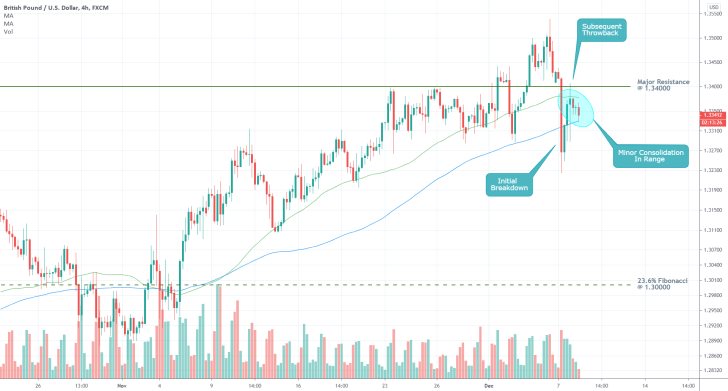
Boris Johnson will head to Brussels in the next following days for an emergency meeting with the President of the European Commission Ursula von der Leyen. The two leaders will attempt to clinch a mutually satisfying agreement after the latest deadlock in negotiations that was hit over the weekend.
The two sides have until the 31st of December to come to terms with each other if they want to have secured a trade deal beforehand. The PM, who has been the main architect of Brexit since 2016, has been adamant about getting Britain out of the EU by that deadline at all costs, so postponing the talks past the 31st seems highly improbable.
Experts familiar with the matter expect that most of the peculiarities of the broader deal have already been ironed out, with three crucial contention points still remaining. According to Bloomberg, those include fishing rights for European fishing fleets within British coastal waters; fair competition opportunities for European businesses; and matters of governance, such as whether and to what extent state aid would be acceptable.
It is about to be seen whether either of the two sides backs down on those stumbling blocks in favour of striking a compromising deal. Meanwhile, the markets are focused solely on whether or not the negotiations end up in agreement.
This means that the initial market reaction to any deal, regardless of whether it pans out to be a good one or a bad one, is likely to be one of optimism. Only after this initial volatility outburst is settled down can the long process of pricing in the more intricate outcomes from such a deal commence.
In contrast, if this week's talks in Brussels between the PM and Ursula von der Leyen hit another roadblock, this is likely to prompt another sell-off of the pound. That is so because the Brexit negotiations have had an extremely polarising impact on the value of the GBPUSD.
As can be seen on the 4H chart below, the pair has recently broken down below the major resistance level at 1.3400, following the aforementioned negotiations roadblock that was reached over the weekend.
The underlying price action is currently being consolidated in a tight range between the 50-day MA (in green) and the 100-day MA (in blue). This is happening as the overall trading volume diminishes in anticipation of the forthcoming meeting in Brussels.
The subdued price action is likely to persist until more information regarding the outcome of the negotiations becomes available.

Trendsharks Premium
Gold is undergoing a correction, as investors take profits to offset losses from falling stock prices, impacting their margins. However, we anticipate a renewed wave of [...]
The Swiss stock market index is mirroring its global counterparts, such as Germany 40 and US100, experiencing a sharp decline following the announcement of new [...]
We’re analyzing the weekly chart to grasp the broader market trend. Over the past three years, the US30 index has surged by 17,000 points, often resembling a nearly straight [...]
Over the past week, the DAX has experienced a sharp decline, plunging by an astonishing 3,400 points. This downward movement is not isolated, as its international counterparts, such as the UK100 and US100, are also facing significant [...]
EURUSD recently formed a double top at 1.0930, signaling a potential trend reversal, and has since begun a correction. After a 600-pip rally since early March, a pullback at this stage is both expected and healthy. Given these conditions, we are placing a [...]
Since early March, EURJPY has surged nearly 1,000 pips, providing us with several excellent trading opportunities. However, as the rally matures, many early buyers are beginning to take profits, leading to a noticeable slowdown in the uptrend. On Friday, the pair formed a [...]
The AUDJPY currency pair continues to be dominated by bullish momentum, as multiple golden cross patterns reaffirm the strength of the ongoing uptrend. Despite this, we are witnessing a much-needed [...]
The EURAUD currency pair appears to be undergoing a trend reversal, signaling a potential shift in market direction. A notable technical development is the formation of a Death Cross on the chart, a widely recognized bearish indicator that typically suggests a [...]
After securing an impressive 200-pip profit last week, the EURJPY currency pair is now undergoing a southward correction, retracing some of its recent gains. Despite this temporary pullback, the Golden Cross remains intact, reinforcing our view that the overall trend continues to be [...]
The appearance of a Golden Cross in Silver strengthens our analysis that the metal is currently in a strong uptrend, indicating further bullish momentum in the market. This technical pattern, where the short-term moving average crosses above the [...]
This trade presents a considerable level of risk and can be classified as an opportunistic move based on recent price action. The GBPUSD currency pair has experienced a substantial bullish rally, surging by nearly 500 pips in a strong upward movement. However, after this extended period of appreciation, the pair is showing signs of a potential [...]
The anticipated Death Cross on the SMI20 appears to be failing as price finds strong support at the 23% Fibonacci retracement level. After testing this area, the index has shown bullish strength, printing several large green candles, signaling an increase in [...]
A Golden Cross has just appeared on the USDJPY chart, signaling a potential bullish move. This technical pattern occurs when the 20 period moving average crosses above the 60 period moving average, a widely recognized indication of increasing [...]
After 2 months of a down trend, we finally see some indications of price recovery for Oil. The golden cross, a historic buy signal, supports this [...]
For the past month, the German DAX40 has experienced a remarkable 10% surge, reflecting strong bullish momentum. Despite ongoing market volatility and frequent pullbacks, every dip continues to attract fresh buyers, reinforcing the [...]
Oil continues its downward trajectory, despite occasional pullbacks. The overall trend remains bearish, reinforced by multiple Death Cross patterns, a classic sell signal indicating further weakness. Adding to this bearish outlook, the critical [...]
Over the past few days, gold has experienced a sharp decline of more than $100. This downturn can be attributed in part to traders securing profits to manage their margins, which are under strain due to the significant drop in major indices. Currently, gold has fallen below the [...]
The NASDAQ 100 index is showing strong bullish momentum, as evidenced by the formation of a Golden Cross on the chart. This classic buy signal occurs when the short moving average crosses above the long term moving average, suggesting that upward momentum is [...]
The EURAUD currency pair has encountered a significant resistance level, failing to break above the critical 61% Fibonacci retracement level. This suggests that bullish momentum is weakening, reinforcing the case for a potential downward move. Given this technical setup, we favor entering a [...]
The UK100 is experiencing a remarkable rally! Over the past few weeks, the British stock market index has surged nearly 800 points. Each minor dip has attracted more buyers, fueling the bullish momentum. However, since last week, we’ve observed a slight [...]




















